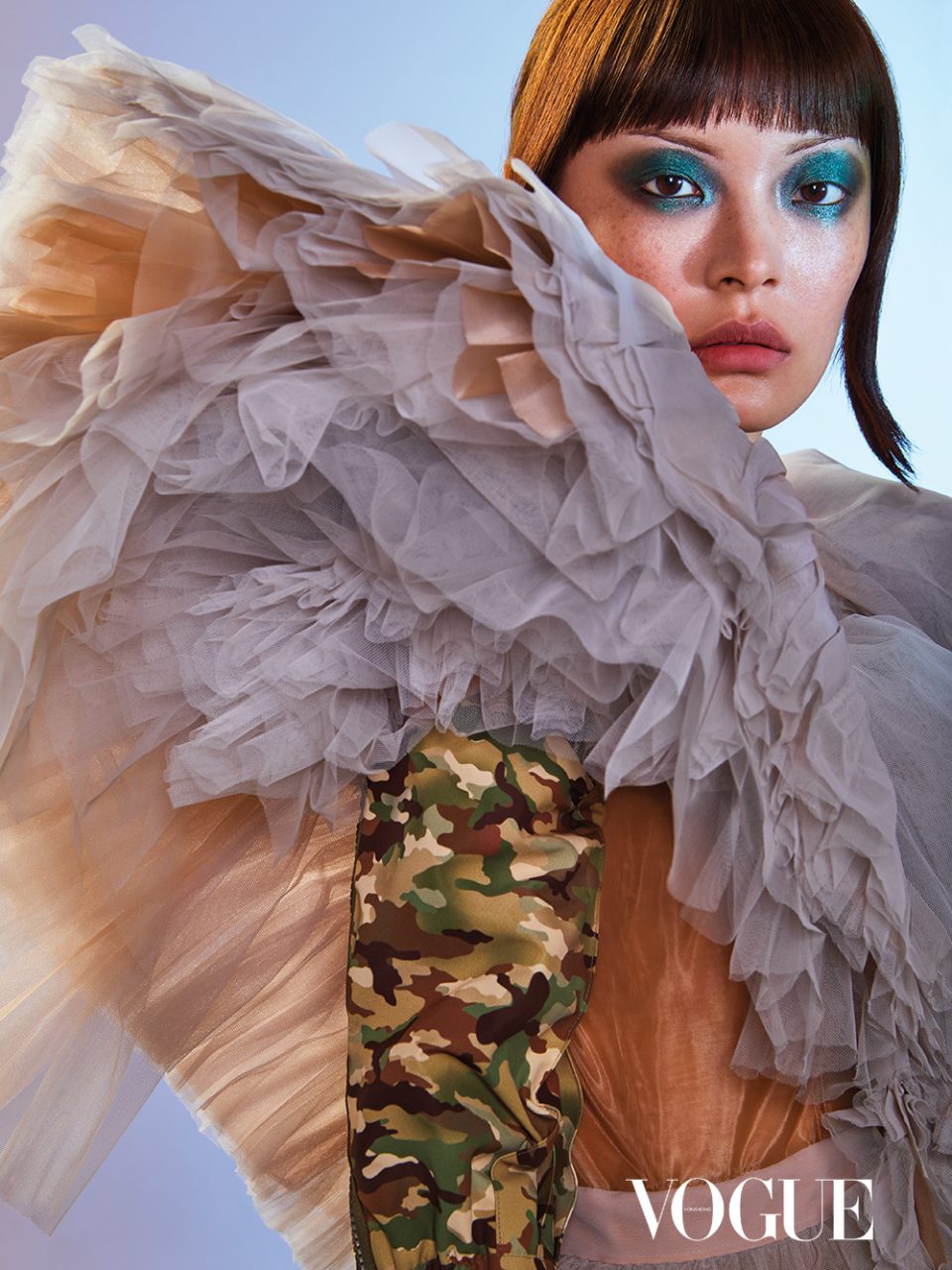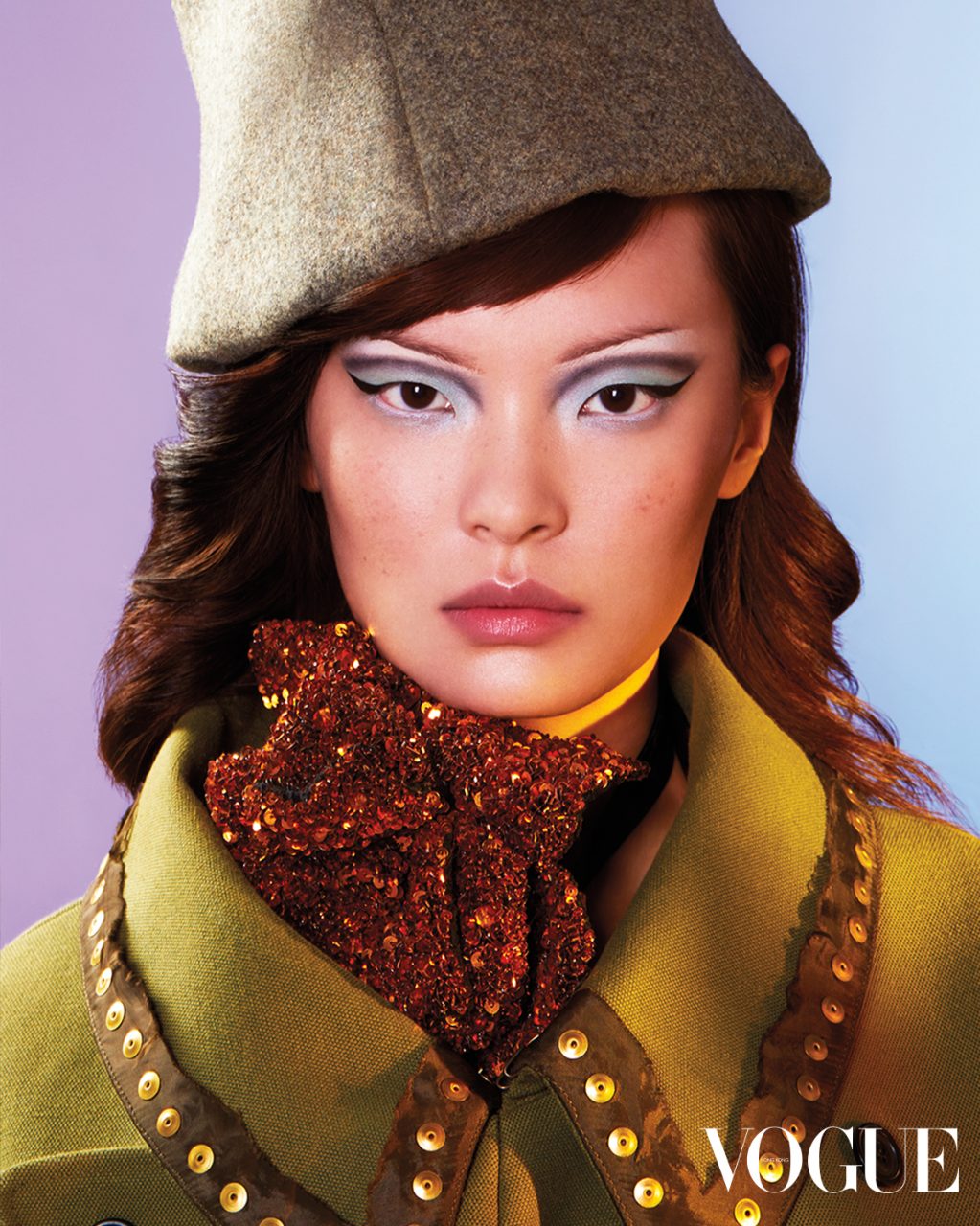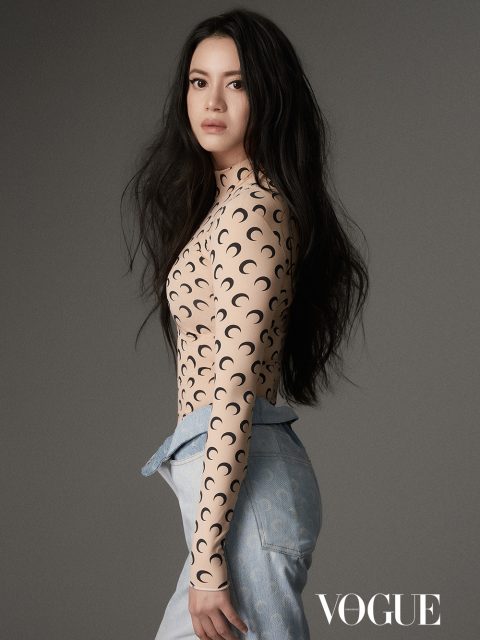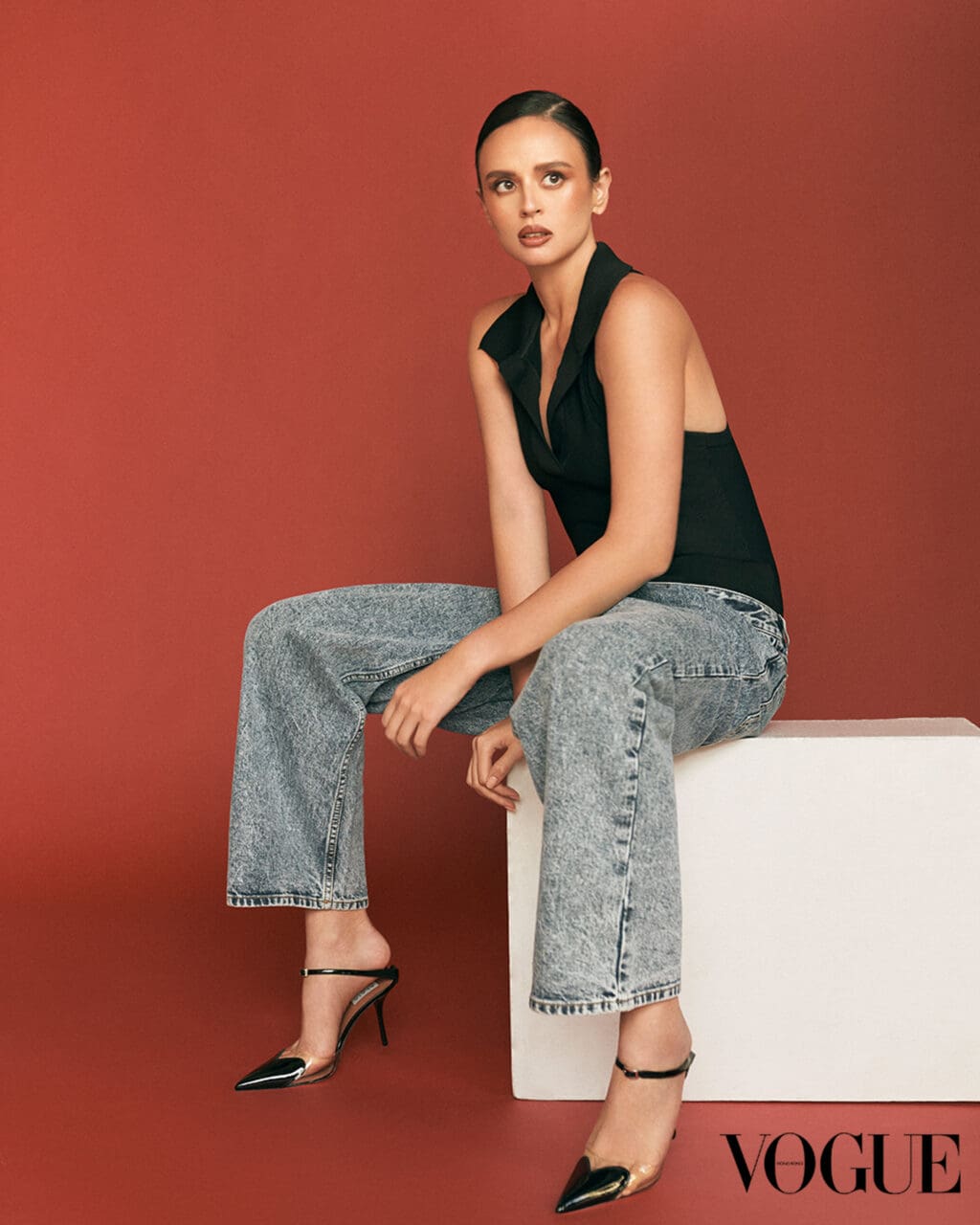Terry Barber is a veteran makeup artist whose expert looks have appeared on many a runway and magazine cover throughout his 27-year career. Barber began his foray into the makeup industry behind the MAC counters at Harvey Nichols in 1994, slowly climbing up the ranks at MAC Cosmetics to now bear the title of Director of Makeup Artistry.
The artist is known for his bold, expressive works that artfully deconstruct the ‘perfect’ makeup look—eyeliner is smudged, lips are stained and creasing is left untouched, highlighting a raw quality that speaks to the everyday makeup wearer. The British artist incorporates touches of surrealism and irony into his work, his Instagram perfectly encapsulating his love for the irreverent as he juxtaposes his makeup creations with everyday household items. Texture and colour references are found in the likes of a toasted-brown peanut butter sandwich, or glistening green olives, with a particularly captivating post comparing a partially dissolved, grungy liner look with singed paper edges and other consequences of fire damage.
We spoke to the artist about the beauty of nuanced imperfections, his punk subculture inspirations and the thought process behind the posts on his famed Instagram account.
How has your perspective as a makeup artist changed since starting at MAC Harvey Nichols in 1994? Do you feel as though you have more liberty to ‘colour outside of the lines’?
Like every makeup artist, at the beginning of my career I felt the need to make everything look as technically perfect as possible. If you work on a makeup counter with real consumers, it’s your responsibility to simply make them look beautiful. It was the best training because I was working on people of every age, race, gender, culture and background. I not only learned the craft of applying product and manipulating features but also the emotional connections that people have with makeup and how it affects their lives. This is why I like to connect words, references and thoughts to makeup images because I like them to become a human experience.
Were there any pivotal moments in your career in which you felt a shift in how you approached beauty?
When I started working in other genres of makeup like runway and editorial, I discovered the sense of experimentation that was necessary to tell different stories through makeup, whether that’s being very raw and provocative, or highly luxurious. Working on the iconic shows of Alexander McQueen in the late 90s and early noughties gave me a totally different perspective on beauty. That stripped back, alien quality that we gave the models made me realise that beauty wasn’t just about glamour. It was almost anti beauty, which somehow made it more powerful. The most captivating beauty often lies within the strange.
What prompted you to share your makeup looks alongside standard everyday images of household items or other unconventional objects on your Instagram?
It was about looking at beauty from a different angle, with some humour and irreverence which have become sadly lacking in style culture. I felt makeup was becoming extremely generic on social media and I just wanted to do the exact opposite. I like the juxtaposition of something beautiful with something basic, even ugly, as it makes it more memorable. I also wanted it to appeal to people who thought the same way I did and are slightly bored with carbon-copy celebrity faces. Social media beauty had become a bit like a competitive sport and I had no desire to take part in the makeup Olympics.
View this post on Instagram
Do you use these images as a source of inspiration for your makeup looks or do you tend to create looks and then retrospectively observe similarities and draw parallels?
I always draw the parallel retrospectively. It’s more about creating a still life which is slightly surreal or Pop Art. I really don’t look at kitchen utensils and garbage bags and think about eye makeup designs! I feel that we are always drawn to colours and textures which stir up something in our memory, especially if we’ve previously thought of them as bad taste. There’s a lot of nostalgia in my images.
View this post on Instagram
Where do you draw the line between exercising more traditional techniques in makeup looks and the creativity and artistry behind your decisions?
I have a huge respect for classicism. You have to have learned the principles of beauty before you attempt any type of deconstruction. I’ve always stood by the Picasso quote that you “learn the rules like a pro, so you can break them like an artist.” Most of the beauty I do is based on classic beauty statements like red lips, black eyeliner or pink blush. Its just the way I tweak them that’s considered to be more artistic. Nothing is ever raw without having originally been beautiful. I guess it’s about working makeup backwards.
Your work has a very honest, raw yet refined feel – you’ve talked about the beauty in nuanced imperfections. Do you think this mentality will be adopted by the wider beauty community anytime soon?
Most of the imperfections I talk about are what I feel happen in the real world. Most people that I know who wear makeup prefer it when its absorbed into their skin, melted a little or worn off to leave a leftover stain. It’s the beautiful accidents and mistakes that fascinate me because I think they’re ultimately what make people feel cool and more effortless. Whether the beauty community acknowledges this or not as technique is inconsequential as it is the reality that I’m observing of people in the modern world who have to get ready quickly, do makeup on trains, buses and taxis, don’t have time to constantly touch up or who have simply streamlined their routine down to one detail. Those who can make themselves look put together in a very small space of time are the most inspirational to me. Regardless of what’s fashionable, I’m far more interested in a knowing smudge than a precise line.
Hat and coat, all Masion Margiela; Necklace, Dries Van Noten
You often incorporate punk-like elements into your makeup looks, including grungy, smokey eyes with bold sweeps of colour. You have cited David Bowie as your original fascination with makeup. Would you say you were influenced by punk culture?
I was part of the post-punk subculture explosion in the UK in the 80s and when you’re from that generation, attitude is everything. It was incredibly DIY and experimental then. No one wanted to look the same and definitely no one wanted “fit in.” This idea of championing the outsiders and misfits still motivates my work to this day. For many people, makeup is their way of saying exactly who they are, and the punk mentality was that it doesn’t necessarily have to be pretty. What was inspirational about Bowie was that he blurred so many lines in terms of gender, sexuality and glamour. This was so beautiful and seductive to me. I see his legacy still, especially in a new generation who are starting to break down the barriers of gender and who feel celebrity culture and brand dictated fashion are not enough for them.
Who are your biggest inspirations in life, and in makeup?
I’m a huge lover of the iconic fashion and beauty photographers. They’re the image-makers who reflected the decades, documented the ongoing story of style and whom I still turn to now for inspiration. Helmut Newton, Guy Bourdin, Irving Penn and Peter Lindbergh are probably the holy grail for me in terms of references, yet all with a different perspective on what beauty is. In life I’m the owner of a neurotic Staffordshire Bull Terrier who makes sure that my attention is solely focussed on her.
Photographer: Rui Faria at Fast Management
Makeup Artist: Terry Barber at David Artists
Stylist: Bobette Cohn
Hair Stylist: Stephen Low
Model: Chen Xue @Storm Management
Casting: Christie Phedon
Coordination: Fast Management
Manicurist: Robbie Tomkins @Premier Hair & Makeup
Makeup Assistant: Dominic Hogg @David Artists
Fashion Assistant: Celine Sheridan
Photography Assistant: Celine Luetof
Post Production: Kostas at Postmode
Editor
Carina Fischer








